Progeria pictures below may give you a shocking view of how this disease can cause rapid aging among children. Progeria disease is a unique, rare condition that occurs amongst young children. The condition manifests symptoms that resemble the normal aging of the human body but at a highly accelerated rate. In other words, it causes children afflicted with this disorder to age too fast whereby the process starts during the first 2 years of their lives. Another term for it is HGPS or Hutchinson-Gilford progeria syndrome.
Children with progeria look normal after birth, but usually the symptoms begin during the 12th month, like hair loss and slow growth. The average expectancy of children with HGPS is usually only 13 years but some children die earlier while others live over twenty years and even longer. The common causes of death for children with progeria are either stroke or heart diseases. Ninety percent of these children have gene mutation in which there is an alteration in the protein lamin A. HGPS commonly happens to children without any particular cause. There is no cure reported for children with HGPS but research is still being carried out to provide treatment.
Causes of Progeria
Certain studies recorded that the one responsible for the abnormal growth of children experiencing progeria is the alteration of a single gene known as LMNA or lamin A. This gene is responsible for making the protein that is necessary in holding the nucleus or the center of the cell together. Researchers believe that the gene being altered makes the cells unstable which then leads to the characteristics of progeria – the process of accelerated aging.
Most of the time, certain genetic alterations are passed down within the family or are inherited from parent to child but this is not the case of HGPS. The change in the gene is only a chance that happens when it affects a single egg or sperm right before conception. Both parents are not the carriers of the gene change so the alteration found in the genes of the progeria children is new. But, there are rare cases of progeria that run within families. These are Werner syndrome and Wiedemann-Rautenstrauch syndrome. With Wiedemann-Rautenstrauch, syndrome the aging process starts inside the womb and the signs and symptoms are clearly revealed at birth. Another term for this is the neonatal progeroid syndrome. The beginning of the aging process with Werner syndrome is during adolescence or the early adulthood years. Both of these inherited syndromes have similar aging process and the life span is shortened as well.
Progeria Symptoms
Most of the time during the first year, the growth of the children with progeria slowly progresses where it indicates the weight and height to be abnormal or below the average for their age. The development of their minds and their thinking stays normal. The symptoms and signs of HGPS include:
• Prominent eyes
• Visible veins
• Thin lips
• Head is not proportional to the body and the head is too large for the face
• Scleroderma or the tightening and hardening of the skin on the extremities and the trunk
• Alopecia or hair loss which includes the eyebrows and eyelashes
• A beaked nose and narrowed face
• Growth slowly progresses combined with below the average weight and height
• Irregular heartbeat
• Insulin resistance
• Hip dislocation
• Stiff joints
• Muscles and body fat are diminished
• Abnormal and delayed formation of the tooth
• Micrognathia or the lower jaw is smaller
• High-pitched voice
When the following symptoms are displayed in your children, it is recommended to have an appointment with a doctor specializing in this field in order to treat them early.
The complications these children develop are usually the hardening of their arteries. This condition happens when the walls of the arteries become thickened and stiff which impeded the normal blood flow. These arteries are responsible for carrying the necessary oxygen and nutrients from the heart to the entire body. Other complications that are also linked with the deaths of children with progeria are:
• Cardiovascular problems or narrowing of the blood vessels which results to congestive heart failure and heart attack.
• Cerebrovascular problems or the blood vessels that is responsible in supplying the brain which results to stroke.
There are certain problems associated with the normal aging process such as the Alzheimer’s disease and far-sightedness but do not occur in cases of Hutchinson-Gilford progeria syndrome.
Progeria Diagnosis and Treatment
One thing about this disease is that there is no cure for it. In order to manage progeria, first is to set an appointment with your doctor. If you notice symptoms developing in your child are similar to that of HGPS, make an appointment with your child’s pediatrician. After a series of evaluations, your child may be referred to a certain genetics specialist. It will also help the doctor if you note down the symptoms your child is experiencing and how long they have been happening.
There are parents who may not be able to take everything in when they see their children suffering from HGPS so it is best to bring someone along with you during the check up as an emotional support and help provide information as well. The doctor may ask a series of questions to establish and confirm the condition of your child.
There are no treatment methods so far that have shown to be effective against progeria. Thus, most treatments are concentrated on preventing or lessening the complications that may arise. The following are some steps taken to help reduce chances of complications or help the child to cope with the symptoms and alleviate suffering.
• For cardiovascular disease, medicating with low doses of aspirin may help avoid stroke and heart attacks. Heart bypass surgery may also be suggested by the doctor.
• Physical therapy can be recommended to alleviate joint and hip problems.
• Enhanced nutrition such as high calorie-diet will help ensure sufficient nutrition and prevent weight loss. In case of infants who has low intake, the use of feeding tubes or syringes to force down milk, fluids and food can be done.
• Removal of primary teeth. Because of the accelerated process, the permanent teeth may come out even before the primary teeth fall off. Extraction is recommended to avoid a second row of teeth or overcrowding in the mouth of the child with progeria.
Progeria Pictures
Check out the photos of progeria children to find out how this rapidly ageing disease manifests.
Video, Progeria Family in India
Progeria in India struck a family where the children were stuck with this debilitating disorder. See this video of the Progeria family in India
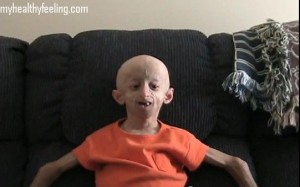
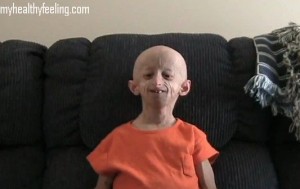
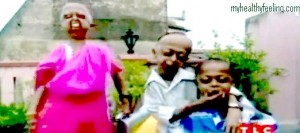
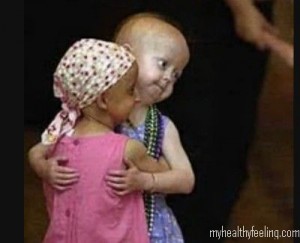
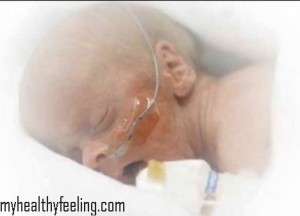
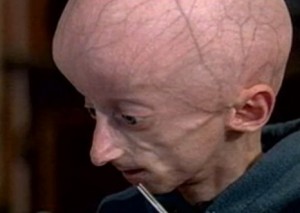
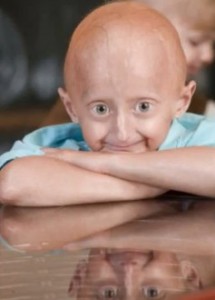
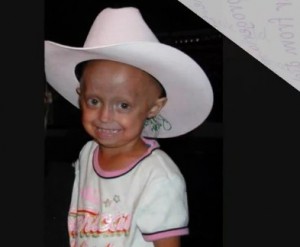
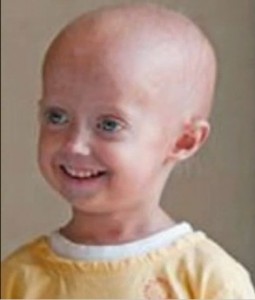
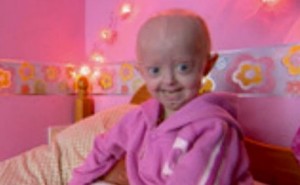
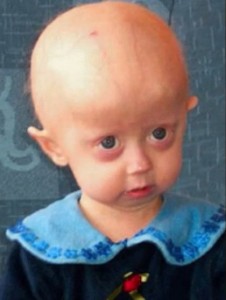
I will right away grab your rss as I can not find your e-mail subscription link or e-newsletter service. Do you’ve any? Please let me know so that I could subscribe. Thanks.